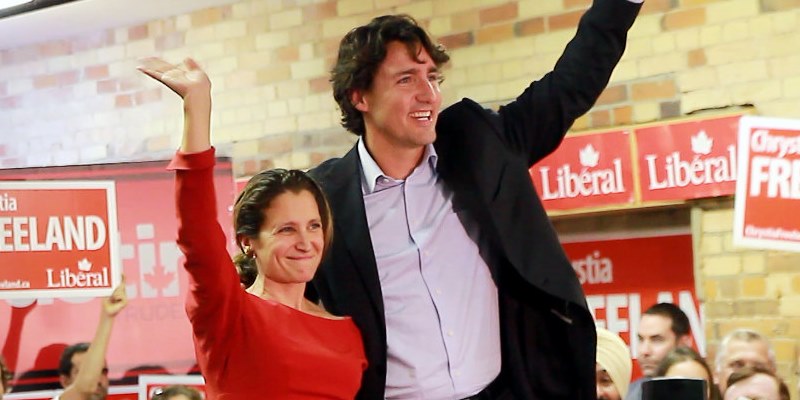History is clear—the Trudeau government needs to change direction

The Trudeau Liberals were elected in 2015 promising a new direction in fiscal policy. Their 2015 platform stated that: “Canada’s economy has faltered… It is time for smart, strategic investments that will turn our economy around and get it growing again.” In their inaugural budget in 2016, they talked about the need for “fundamental change” and massive “investments” by government.
In its first steps, the Trudeau government raised taxes on most taxpayers (despite promising tax relief for the middle class), and dramatically increased spending and borrowing. These changes, the government argued, would produce a stronger, more robust economy.
Before assessing the economy’s performance, it’s first important to recognize the Trudeau government’s striking break from a two-decade long policy consensus. First, unlike prime ministers Chrétien, Martin and Harper, Prime Minister Trudeau voluntarily decided to run deficits to finance additional spending, originally committing to cumulative budget deficits of $25.1 billion over three years and a return to balanced budgets in 2019-20. In fact, the government ran $89.1 billion in deficits over five years (2015-2019) with no end in sight—and it did this pre-recession.
The government also raised taxes, including by imposing a new top income tax rate on professionals, entrepreneurs and businessowners. Although the government did reduce the federal personal income tax rate for middle-income earners from 22.0 per cent to 20.5 per cent, it also eliminated a host of tax credits. The net effect was to increase personal income taxes for more than 80 per cent of middle-income families. It’s also worth noting that more than 60 per cent of families in the bottom 20 per cent pay higher income taxes today because of the discontinued tax credits.
The higher tax revenues weren’t enough, however, to finance all the new spending the government wanted so additional borrowing was needed. Federal spending on government programs between 2015 and 2019, the latest year for which detailed data are available, increased by $69.1 billion or 27.2 per cent.
This fiscal bacchanalia of higher taxes, more borrowing and more spending was all meant to improve the economy and increase incomes for Canadian families. But like past experiences with such policies, the economy did not flourish as promised.
Real GDP per person—the total value of all goods and services produced in Canada in a particular year, adjusted for population and inflation (in 2018 dollars)—grew 2.3 per cent between 2014 and 2018, the latest year for which data are available. That’s less than half the growth rate (4.9 per cent) between 2004 and 2008, before the last recession.
The average income for individual Canadians (after tax) grew by 3.7 per cent between 2014 and 2018—again, less than half the rate of growth (8.0 per cent) between 2004 and 2008.
The results are no better for Canadian families. Average after-tax income for families increased by 4.4 per cent between 2014 and 2018, less than half the increase (9.7 per cent) between 2004 and 2008.
A decline in business investment, the foundation for economic prosperity, partly explains the recent slowdown in overall economic and income growth. Between 2014 and 2019, business investment—including investment in machinery, equipment, factories and intellectual property, but excluding residential investment—dropped 17.3 per cent. This compares with a 42.1 per cent increase between 2003 and 2008. It’s hard to imagine a starker contrast. And we can’t blame the recent drop in investment on the energy sector’s decline; a recent analysis found that two-thirds of Canada’s industries have experienced a decline in business investment.
It’s important to recognize the impact of the policy reforms introduced in 2015 and continued to this day, particularly as we contemplate policies to aid in economic recovery. Simply put, the Liberal mix of higher taxes, more government spending and indebtedness did not result in a robust economy as promised. Rather, GDP and income growth have slowed, and business investment has collapsed. And that all happened before anyone had heard of COVID-19. If the federal government wants to help foster economic recovery and a return to prosperity, it needs to change direction.
Authors:
Subscribe to the Fraser Institute
Get the latest news from the Fraser Institute on the latest research studies, news and events.



